Learn About Diamonds
The 4 Cs of Diamonds-What's Important When Buying Diamonds?
So, you've decided to buy a diamond, and you're wondering how to choose the perfect one. Although most diamonds appear to be somewhat similar, subtle differences distinguish one from the other. And, because of these minor variations, each of them is special and unique.
When it comes to picking a beautiful diamond, there are four characteristics to consider- the 4Cs. The 4Cs is the globally accepted standard for grading diamonds developed by the Gemological Institute of America (GIA).
All about the 4Cs
The 4 Cs: Carat, Clarity, Color, and Cut, determine a diamond's value and worth.
Carat is the measurement unit of a diamond's weight. 0.20g = 1 carat
Clarity refers to visual appearance and the absence of minor imperfections, also known as inclusions, on the diamond. Diamonds with fewer inclusions have a higher clarity grade. The clarity grade ranges from Flawless to Included.
Color is the absence of a colored hue on the diamond. A diamond's color grade ranges from D(colorless) to Z(light yellow); Colorless diamonds are the most valuable ones.
Cut refers to how well-proportioned a diamond is that determines its shine and sparkle. The cut of a diamond is graded from Super Ideal to Ideal, Very Good, Good, Fair, and Poor for reflecting light.
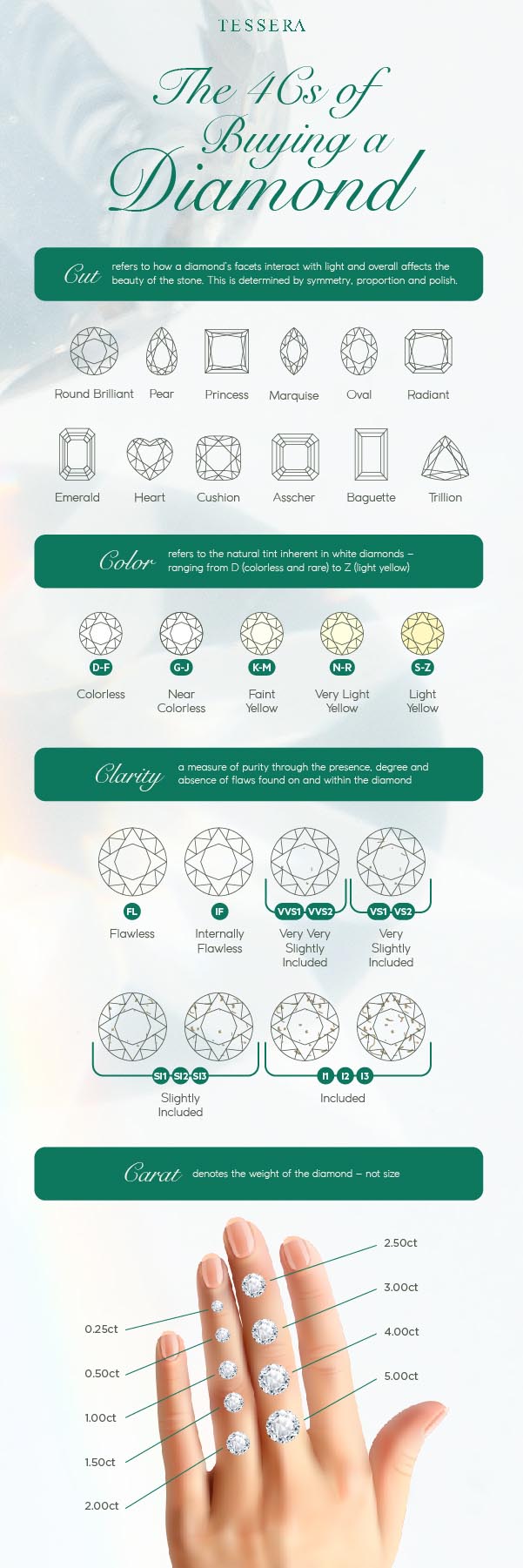
To find the perfect diamond that fits within your budget, follow our step-by-step guide below.
Step 1: Decide your budget
Think about how much you want to spend on your diamond. Select your diamonds based on your budget and filter out those that don't fall within your budget
Step2: Choose the shape
The most popular diamond shape is round because of its intense fire and brilliance. Most diamond engagement rings are designed with round diamonds. The round cut maximizes light reflection and refraction, making it one of the most dazzling and sparkling diamond shapes. Round diamonds are classic, stunning, and versatile, so they're a good and safe option if you're unsure of the shape to choose.
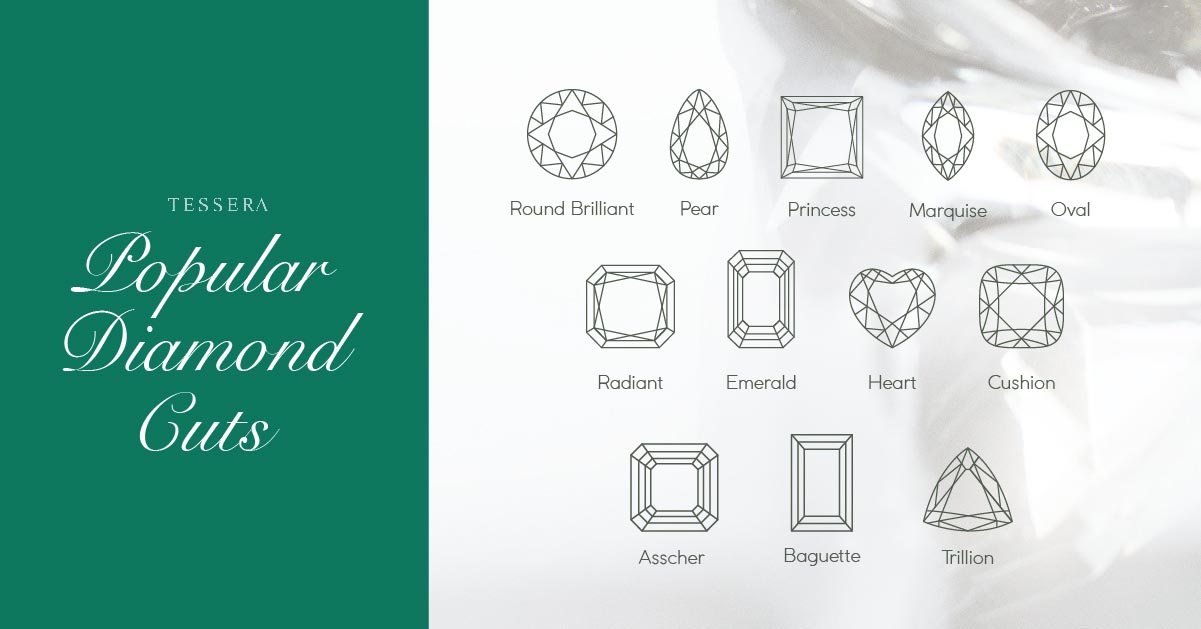
If you're looking for something different, a fancy-shape diamond will be a good choice. The following are great options of fancy-shape diamonds:
Pillow, princess cut, or radiant cut diamonds are good options if you love the brilliance of round diamonds. Princess-cut diamonds have a contemporary look that will look stunning in a stylish ring setting.
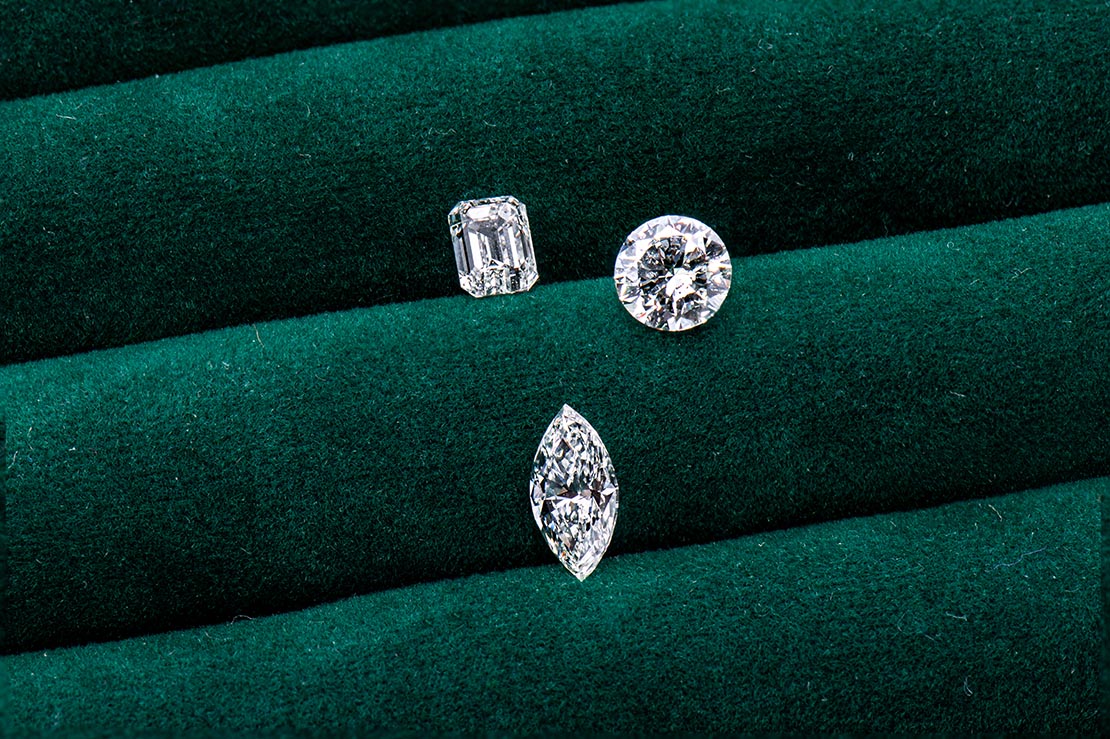
Cushion-cut diamonds are more classic, with their signature softened edges, and are a good choice if you prefer something more vintage.
Emerald-cut and Asscher diamonds are the best choices for a dramatic and elegant look. These diamond cuts are priced lower than other diamond shapes. Though these step-cut diamonds do not have the brilliance of other cuts, their wide polished facets give them a unique mirror-like shine.
Radiant diamonds blend an emerald cut's stylish rectangular shape with a round diamond's sparkle.
Oval, Marquise, Pear, heart shapes are great if you want to stand out from the crowd.
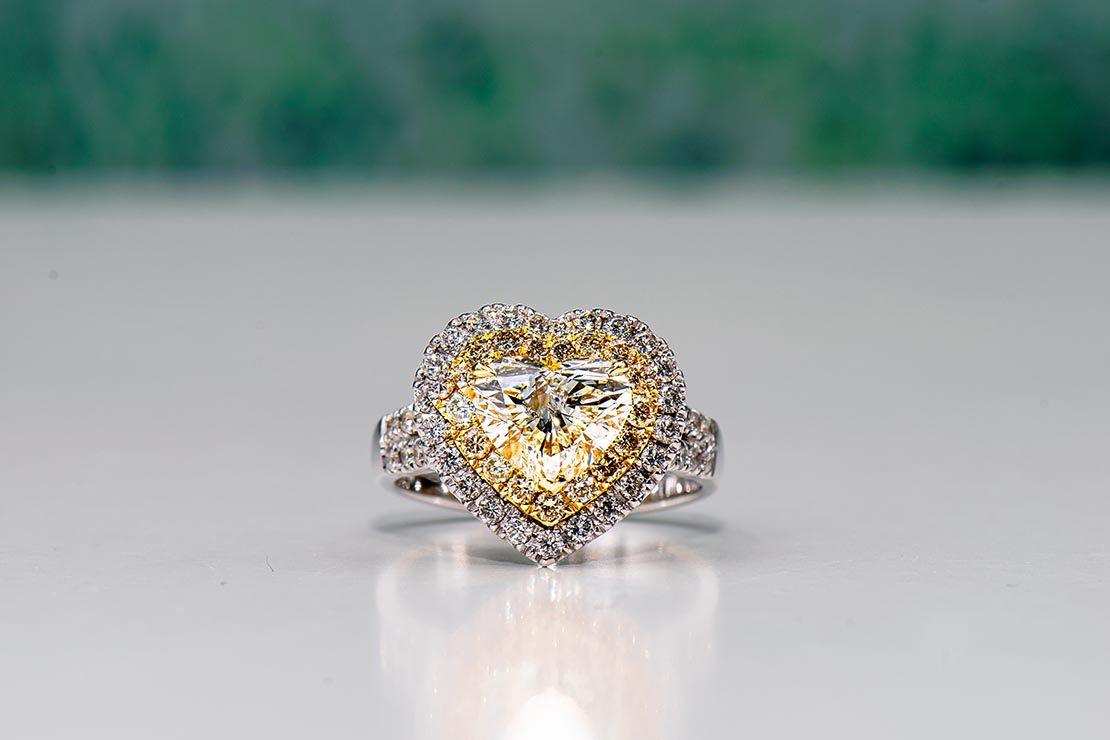
Step 3: Decide the carat weight
Carat is the weight of the diamond. Depending on the other three Cs you choose, two diamonds of identical carat will have different costs. So, what should be the ideal carat of the diamond you want to buy? It depends on your budget and how big you want the diamond to be.
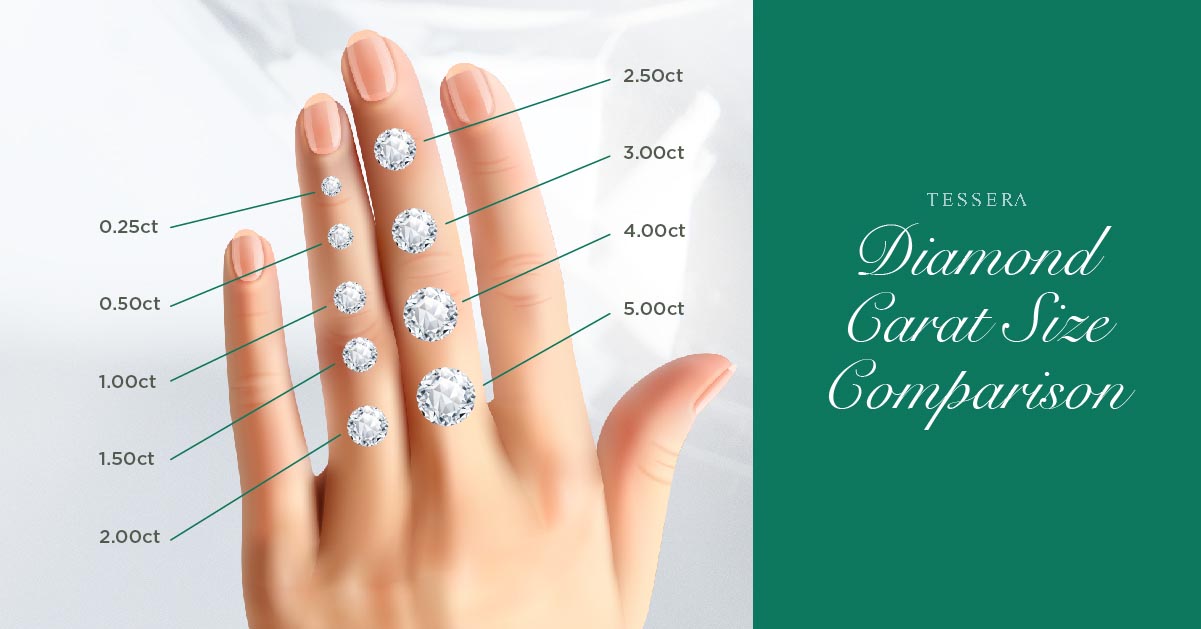
Step 4: Choose cut
When choosing a diamond, cut is the most critical factor. Cut determines a diamond's proportion, polish, and symmetry. The appropriate cut will bring out the diamond's radiance. The better the cut, the more stunning your diamond will be.
At Tessera, we offer diamonds of three different cuts- Excellent, Very Good, and Good, with Excellent diamond cuts emitting the highest level of brilliance and sparkle.
Step 5: Choose the ideal color
When you're buying a diamond, the perfect color to choose would be colorless, and these diamonds are the most valuable. The colors vary from D (colorless) to Z (light yellow). The color variation in diamonds will be barely visible to a layman. However, the diamond color you choose will make a massive difference in the diamond's quality and price.
The color of a diamond is more noticeable in larger diamonds. It would be best to keep this in mind when buying a diamond weighing 2 carats or more.
If you choose a diamond with a yellow hue, it looks best with platinum or a white gold band.
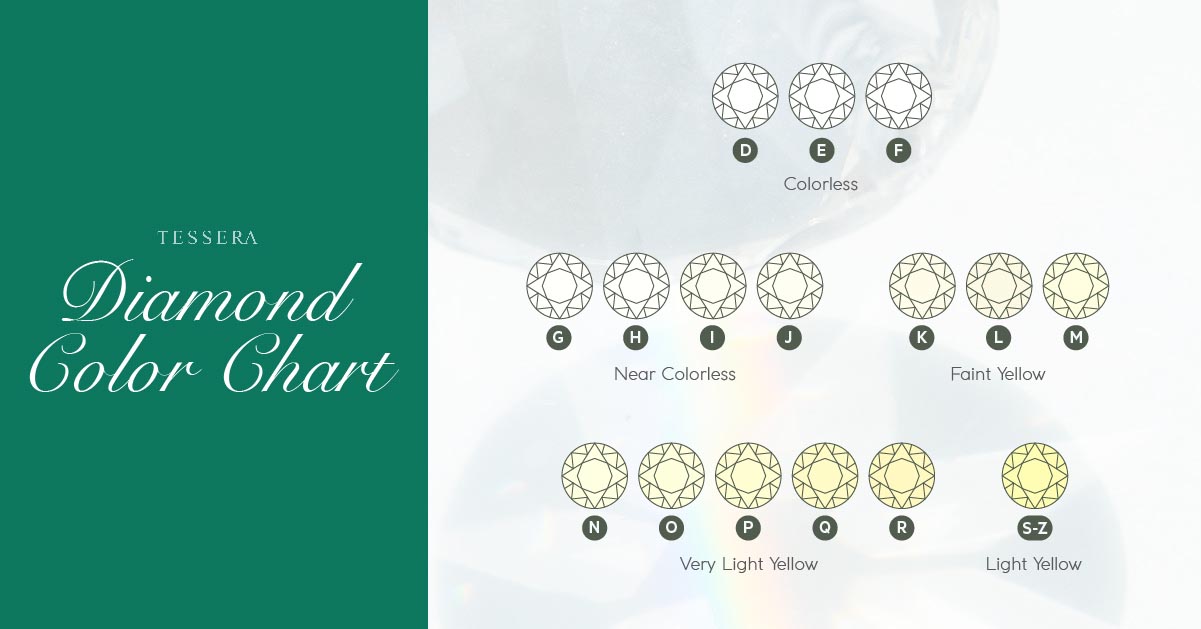
Step 6: Choose the ideal diamond clarity
When light passes through a diamond, it refracts, causing the diamond to sparkle! Few diamonds have minor flaws like blemishes, inclusions, and spots. The more flaws there are, the more difficult it is for light to flow through, and so the shine is reduced. If you choose a diamond with better clarity, it implies fewer inclusions and imperfections.
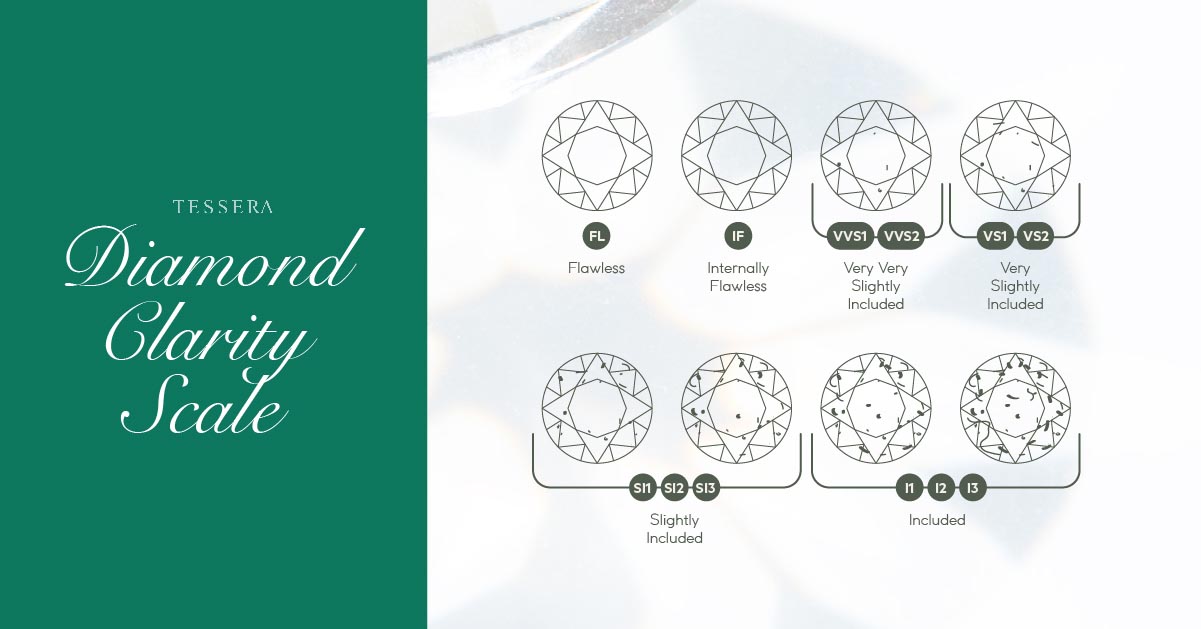
Step 7: Go through the Diamond certificate.
A diamond certificate is a document or a grading report that details the quality and characteristics of the diamond. It lists out the most important aspects which affect the value of the stone.
This certificate includes details of the 4Cs and additional information like polish, fluorescence, symmetry, and a diagram depicting the diamond's proportions.
Step 8: Compare diamonds and finalize the one you love
Once you have shortlisted the diamonds you like, compare each diamond and pick one based on your budget.
